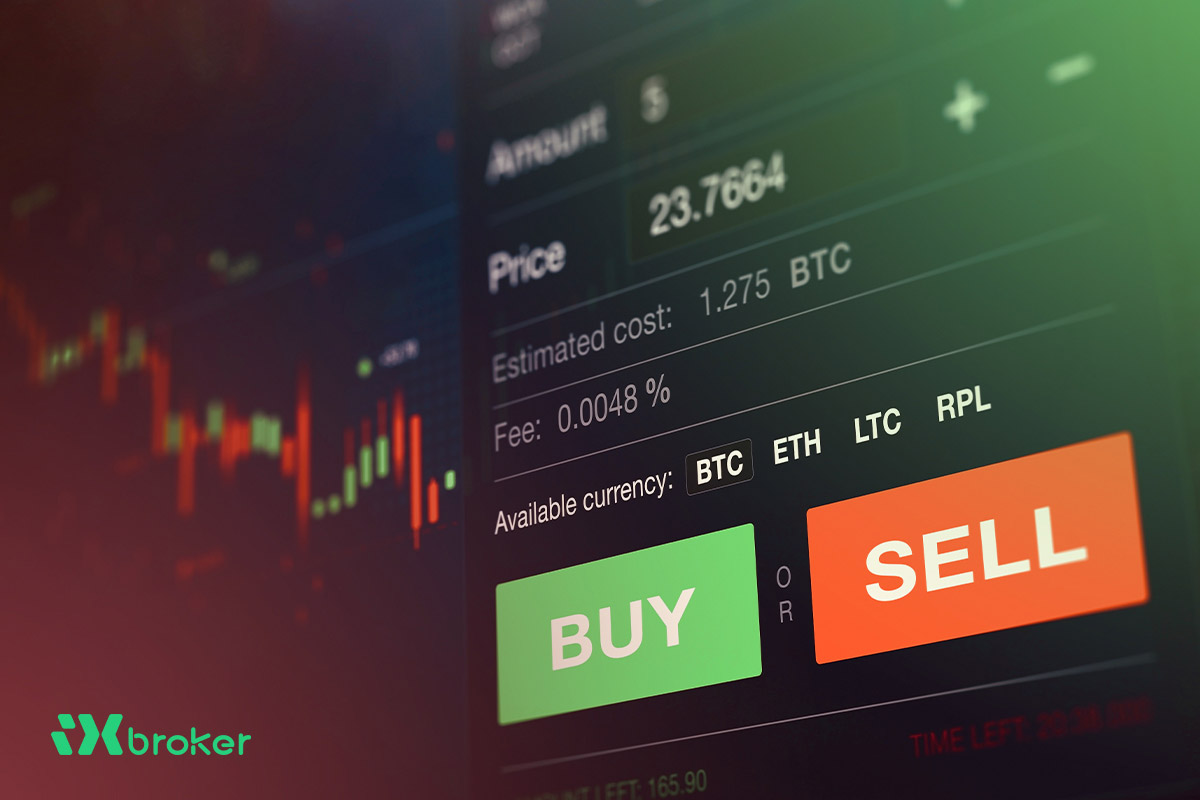In the realm of Forex trading, it is of great importance that you understand the Spread, which is a key element for both new and experienced traders. The Spread plays a significant role in your trading costs, profitability, and overall strategy. In this in-depth guide, we will look at the issue of Spread in Forex, how it works, the various types of spreads out there, and how to manage it best.
What is spread in Forex?
In Forex trading, the Spread is the difference between your currency pair’s bid price (which is at what price the market is willing to buy from you) and the ask price (at what price the market is selling to you). It is a cost which the trader pays at the onset of a trade and is a fundamental element of the Forex market.
How does spread work?
As a point of example, look at the EUR/USD currency pair, where the bid price is 1.1500 and the ask is 1.1503. The space between these two, 0.0003, which translates to 3 pips, is the Spread.
- Bid price (1.1500): The rate at which a trader sells EUR/USD.
- Ask price (1.1503): At what price is the EUR/USD pair bought?
In this instance, the Spread is three pips. Out of what I would term hidden costs in Forex trading, the Spread is a big one.
As soon as you open a position, you are at a loss at the size of the Spread. You will have to wait for the price to move in your favor by more than the Spread, in which case you may break even or see a profit.
Types of Forex spreads
For many forex brokers, what you will see is a range of spread types, and it is to your benefit to know what these are, which in turn will help you to better understand the cost of the trade. The main types of spreads are:
1. Wide Range
A fixed spread is the same in all market conditions. Also, during times of high volatility, the difference between the bid and ask prices does not change.
Pros:
Traders will be able to better predict trading costs, which we see as the Spread remaining constant. This is also very useful for traders who use strategies like scalping.
Cons:
Fixed spreads may at times be greater than variable spreads in low volatility periods.
2. Variable Spread
A spread which is variable or that fluctuates based on market conditions. We see the Spread grow during times of high volatility or low liquidity and return to a narrower range in calmer times.
Pros:
Variable spreads are a feature of calm market conditions, which may in turn lower your trading costs.
Cons:
At times, the Spread will significantly increase during news events or when market volatility goes up, which in turn makes it hard to predict trading costs.
3. Commission-Free Spread
Some brokers present a commission-based spread. What they do is offer very low to zero spreads, but in turn charge a small commission per trade. This is a more open model; which traders can see exactly what they are paying for each trade.
Pros:
Lower rates, in particular for active traders.
Cons:
The commission may add up, also for traders who do a large number of trades in a day.
Factors that affect spread in Forex
The assets that trade in a range of prices are a result of many variables. These are market liquidity, market conditions at the time and the broker you are with.
Market liquidity
In terms of which currency pairs trade the most, we see that EUR/USD, GBP/USD, and USD/JPY are the most liquid, which also means their spreads are the tightest when these assets are traded in high volume.
For less liquid markets, which include those that have exotic currencies, we see that spreads tend to be wide because these markets do not see as much action, and liquidity is low.
High liquidity
Liquidity Pairs: Euro US Dollar, US Dollar Japanese Yen, British Pound US Dollar.
Low Liquidity Pairs: USD/Turkish Lira, USD/African South Rand, EUR/Polish Zloty.
Daytime
From 00 to 16:00 GMT, the market is most liquid. Outside of these hours, spreads tend to widen.
Economic reports and releases
When there is a release of extensive economic reports or geopolitical news spreads tend to widen, which is a result of increased market volatility.
At major news events such as central bank meetings, employment reports, and geopolitical issues, we see the markets become more uncertain, which in turn causes spreads to grow.
Broker category
The broker you trade with also plays a role in what you pay in spreads. Some brokers present a tight spread at the cost of commissions, while others may have a wide spread but don’t charge a commission. It is also very much so that you choose a broker that fits in with your trading style.
Market Makers: These brokers present fixed spreads and profit from the difference between bid and ask prices.
ECN Brokers: These brokers provide a variable spread and also charge a small fee per trade.
How to manage spread in Forex trading?
While the variance is a given element of the cost structure which you have no control over, we still have some tools at our disposal to reduce its impact on your trading.
Select the best Broker
Choosing which broker to trade with is a critical decision for a trader. As an active trader, you may see that which broker you deal with is of great importance to your success, which is why it is essential to research well.
Also, look for a broker which provides transparent commission structures and low spreads. Pay special attention to ECN (Electronic Communication Network) accounts, which may be what you are looking for if you are trading at very high volume.
Trade primary currency pairs
Mainly, it is the major currency pairs which trade with the tightest spreads. If you are looking to reduce the cost of your trades, pay attention to the most liquid pairs like EUR/USD, USD/JPY, and GBP/USD.
Time your orders
Trade in high liquidity markets for the best spreads. As we noted before, the peak times are when the London and New York sessions overlap. Steer clear of trading during low liquidity periods such as weekends or during major holidays.
Pay attention to news events
Avoid during significant economic news releases if you are not an experienced trader who is aware of how to deal with increased volatility.
News events at that time may cause spreads to open up greatly, which is an issue in particular for short-term traders.
Place stop out orders
Using stop loss orders will help you with risk management in turbulent markets. Though it doesn’t reduce your Spread, it can put a stop to significant losses should the market turn against you.
Consider different trading approaches
For many traders who are into long-term play, like swing and position trading, the issue of Spread is reduced. We see that for short-term trades like scalping, the Spread plays a bigger role.
why spread matters in Forex trading
The Spread is out of the question as a hidden cost; it plays into a trader’s overall profitability. Here is what I have found out which Spread does:
Higher trade fees
If you go too far out in the Spread, you will see a rise in your costs per trade. That is also a big issue for day traders or scalpers who run multiple trades per day.
Impacts of entry and exit points
As soon as you enter a trade, the Spread is present, which in turn means you start out at a loss equal to the spread size. This is a variable you should take into account in your total strategy, which, if you’re in high frequency trading, should be of great concern.
Profit and risk management
Managing Spread is a key element in risk management. In a market which has wide spreads, what you will see is that you require a significant price movement in your favors just to get back what you put in, and also to make a profit.
Spread vs. commission: Which one is right for your trading style?
When it comes to the choice of a Forex broker, what you should do is to determine which trading model they use: a spread-based model or a commission-based one.
We see that each of these models has its pros and is more appropriate for certain types of traders.
Also very important is that you, as a trader, understand these differences, which in turn will help you to choose the model that best fits your trading style, strategy and the volume of your trade.
What is a spread-based model?
A broker’s profit in a spread-based model is from the difference between the bid and ask prices of a currency pair, which we term the Spread. What you pay includes this Spread, so there isn’t a separate commission.
For instance, when the EUR/USD is at 1.1500/1.1503, the broker profits from the 0.3 pip spread. Traders do not pay out a per-trade commission, but instead pay via the Spread.
The size of the Spread may vary between brokers, based on market conditions and which currency pair is traded.
What is a commission-based model?
In a revenue-based model, which is what brokers use in a commission structure, they put out a small fee for each trade you do; also, at the same time, they may offer very tight or zero spreads.
This type of price model is what you see with ECN (Electronic Communication Network) brokers, which aim to give you direct market access to the Forex market with minimal intervention.
In this model, we see that the broker reports a low or zero Spread; instead, they charge a commission, which scales with your trade volume (for example $5 per lot). Brokers, in turn, use this method to generate income as opposed to from the Spread.
Conclusion
In order to do well in the market, Forex trading must be understood by you as a trader. The Spread also affects your costs, which in turn plays a role in your profitability; hence, it is essential to take it into account when you are designing your trading strategy. By choice of broker, timing of trade, and which currency pairs you focus on, you can reduce the effect of spreads on your trades.
Since the Spread is a necessary element of forex trade, we, with proper management and strategy, are able to turn it to our advantage. As a beginner or a seasoned trader, what you bring to the table is a clear understanding of the Spread and how it plays out, which in turn will see you make better decisions and improve your overall trading experience.



